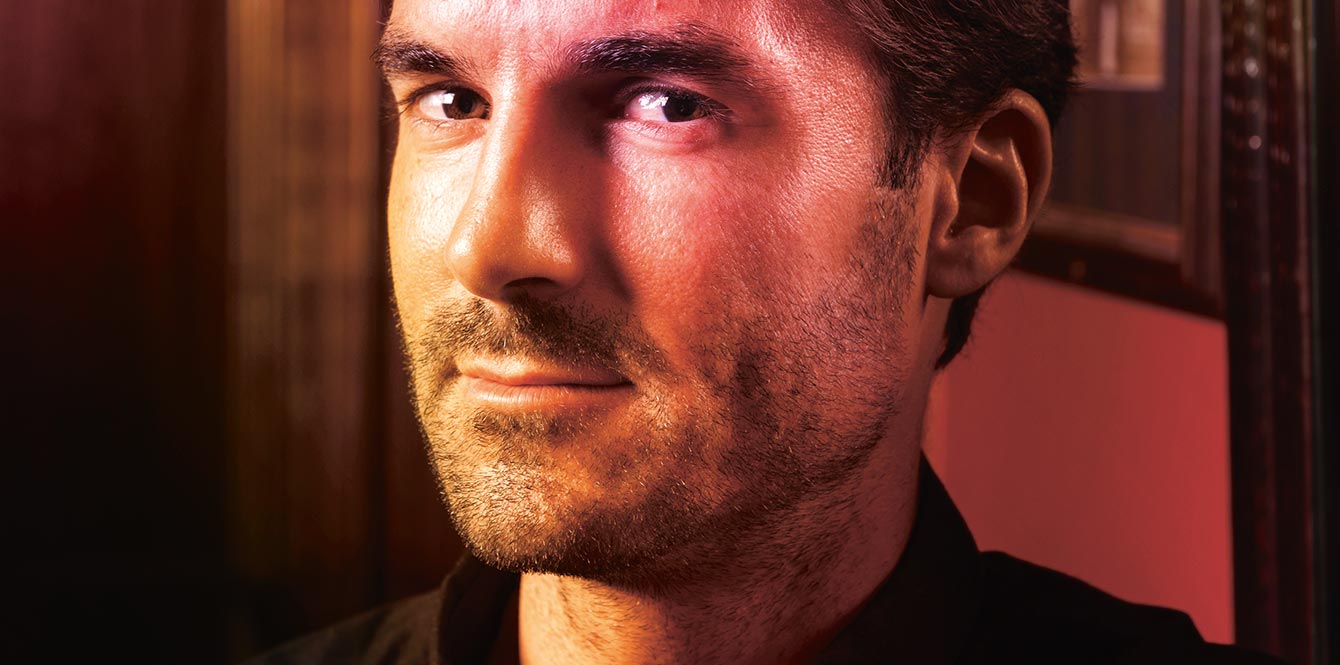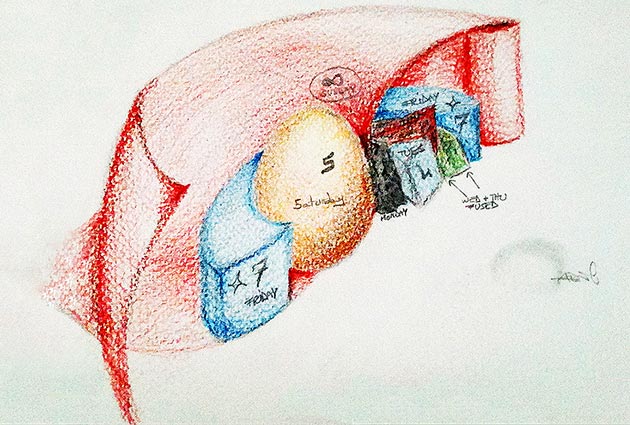
French-born Vincent Mignerot is a synaesthete. His brain spontaneously associates several sensory perceptions. Research on this mysterious neurological mechanism aims to better understand how the brain manages information.
Apr 07, 2015
Vincent Mignerot, who featured in the third issue of In Vivo, has recently published Synaesthesia and conditional probability (Synesthésie et probabilité conditionnelle in French). The book explores the ties between synaesthesia – the ability to assimilate odours with words or colours with pain – and the calculations made by the human brain to anticipate how we should adapt over time. Synaesthesia could even explain the mechanism of intuition.
As a child, Vincent Mignerot sensed the delicious taste of plum every time he pronounced or heard the word “building”. When he was sick, he would visualise his symptoms. For example, his fever resembled a hot, white ball. In other words, he would spontaneously and subconsciously associate several sensory perceptions – taste with a sound or pain with a shape and colour.
It was not until he was 20 years old that this Lyon, France native, now 36, realised by chance that not all humans experience these mental associations. “When I was a psychology student, I read an article that described a phenomenon that I didn’t even know existed but had always lived with myself, synaesthesia,” he says. This neurological ability was first described medically in the early 18th century and affects 4% to 5% of the population worldwide. Synaesthesia can take on several forms. Some synaesthetes see music, while others associate numbers with colours or perceive sound when they smell an odour. Vincent Mignerot experiences six of these forms. “Today, I have lost the lexical-gustatory capacity (associating a word with a taste), but still experience nociception (associating a colour with pain),” he says. “I also experience an intense form of cognitive synaesthesia. All my thoughts occur in the form of colours and shapes that move about in space, in 3D.” Now passionate about the phenomenon, Vincent

Synesthetic art
Mignerot set up a website dedicated to the subject three years ago (synestheorie.fr), which covers the latest scientific research in the area. With the help of a graphic designer, he develops tools that site visitors can use to “test” their everyday perception. “It’s definitely not a super power or even a disability,” he says. “I can easily not pay attention to it. It has never been a problem.” In addition to the philosophical and artistic nature of his project, Vincent Mignerot also hopes that research on synaesthesia will result in scientific progress. “Magnetic resonance imaging (MRI) has already shown that specific neural connections occur in synaesthetes, and the human brain is capable of multimodal sensory integration. All that contributes to a better general understanding of the brain and how it functions.”

Mental maps of numbers
This drawing shows the days of the week as visualized by artist and synesthete Gabriel Numbers. His depiction of the week is not chronological, because he visualizes the days of the week as a non-linear time frame.
The number forms shown here were compiled in the 1880s by Englishman Francis Galton using drawings made by his patients. A cousin of Charles Darwin, he was the first scientist to notice certain persons could associate numbers to visual representations. Thus, the concept of synaethesia took form.